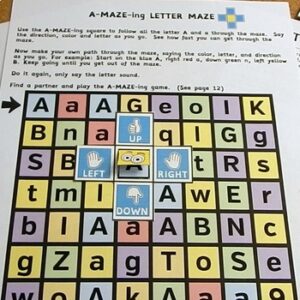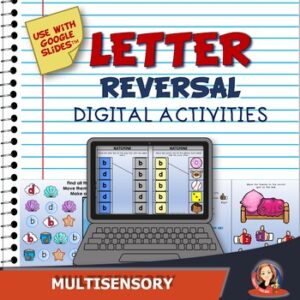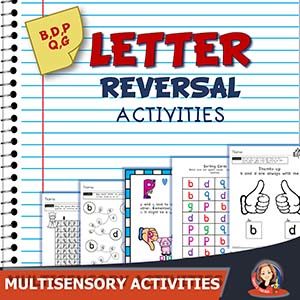In my experience, I have found that struggling readers often have weak visual discrimination skills, and this must be addressed first in order for them to become better readers. When students practice and improve their visual discrimination skills, then practicing phonics, sight words, and decoding is more meaningful and successful.
The good news is that this is a skill that can be learned and improved upon with explicit teaching and practice. Today, I’m going to share with you 10 of my favorite activities and resources that have made a big difference for my struggling readers. I’ll also share a freebie for you at the end that can help all learners.
What is Visual Discrimination?
Visual discrimination is the ability to easily notice the subtle visual details in things, including size, shape, color, position, and directionality. Because success in reading hinges on understanding a visual code, students with weak discrimination skills often struggle. These students may reverse or confuse letters such as b, d, p, q, g, m, w, n, s, and z; struggle with tracking and reading left to right, and lack fluency and comprehension skills.
Visual discrimination is actually a process of the brain, not the eyes.
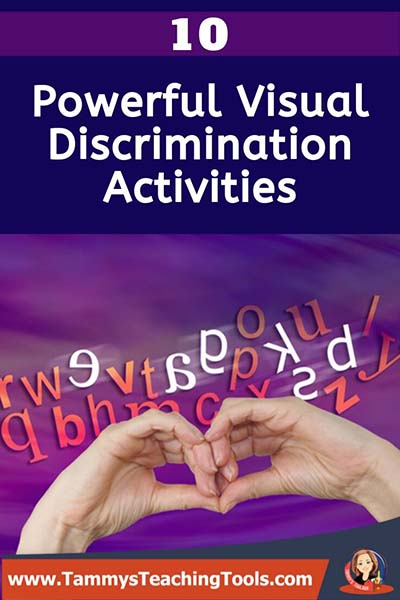
This is an important point to discuss when talking to parents. Students can have 20/20 vision but still struggle with the processes mentioned above. For students who struggle, the visual and mental effort required to process letters and words is so great that they often have little energy left over for things like fluency and comprehension.
Interestingly, unlike other kinds of conditions, children will rarely complain about vision challenges because they don’t realize that their visual perception differs from others. Therefore, the teacher’s role is particularly important in noticing possible issues and talking about them with parents.
 Here’s a fun, quick activity that can be done anywhere with no prep needed. Play “I Spy”, by giving the child clues to finding different objects within their view. This is easy to customize to the skill you are working (shapes, colors, directionality, letters) and the game keeps kids engaged and active.
Here’s a fun, quick activity that can be done anywhere with no prep needed. Play “I Spy”, by giving the child clues to finding different objects within their view. This is easy to customize to the skill you are working (shapes, colors, directionality, letters) and the game keeps kids engaged and active.
The A-MAZE-ing Square Game
A-MAZE-ing squares provide students with practice in letter discrimination, directionality, focus, and fine motor control. The way it works is that students place the open square on top of one of the squares in a maze in order to focus on one letter or symbol at a time. Students then move left, right, up, or down to reveal the next letter or symbol. Students say the direction they are moving, the color, and the symbol aloud. You can have students roll a die and play the game with a partner as well. The goal is for students to get the A-MAZE-ing square through the maze while practicing directionality and letter, sound, or symbol identification.
Letter Reversal Activities
♦ Check out these posters that offer students visual and kinesthetic clues for which letter is which. You can hang these in a prominent place in your classroom or use the smaller ones and tape them to each table so students always have a reference close by.
♦ Students can further practice these common letter mix-ups by reading and highlighting silly sentences, solving letter mazes, and coloring pictures according to letter identification.
♦ Making letter spinners for commonly reversed letters is a portable practice tool that students can use in the car and on the go.
♦ It’s also important to remember that for students struggling with dyslexia or visual processing issues, font matters. Take a closer look at the font used for these sorting cards. Do you notice how the lines and curves of each letter are unique, not uniform? This immensely helps students distinguish each letter.
The name of this font is called EZ Read Kids by DownHill Publishing. Other fonts that are helpful include Open Dyslexic, Dyslexie, Read Regular, and Lexie Readable.
Tracing and Handwriting Practice
Visual discrimination skills can also be strengthened through tracing and handwriting practice. Students can trace a variety of lines from left to right.
Explicit teaching in letter formation will also help students with reversals. I like to use the colors of the traffic light to help students remember the steps for proper letter formation. The green line show students where to start, yellow is next, and finally, red. If a letter is formed in only two strokes, the colors are just green and red.
 Keep a variety of activities available to help with visual discrimination. Great choices are puzzles, hidden picture books, sequencing activities, and matching games.
I hope you find these visual discrimination activities powerful and helpful for your students. It’s often the missing link to reading improvement and can make a big difference in a struggling reader’s life.
Keep a variety of activities available to help with visual discrimination. Great choices are puzzles, hidden picture books, sequencing activities, and matching games.
I hope you find these visual discrimination activities powerful and helpful for your students. It’s often the missing link to reading improvement and can make a big difference in a struggling reader’s life. If you’d like a helpful tool for remembering b and d, check out my free B and D Letter Reversal Bookmark here.
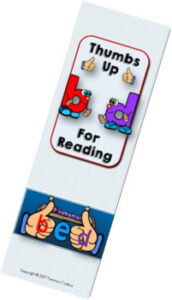
FREE Letter b and d Reversal Bookmark
Check out this bundle of resources for some ready to use activities.
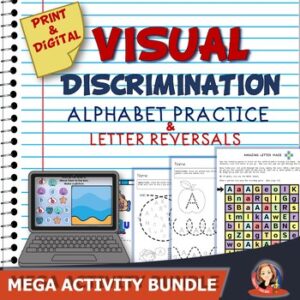
Alphabet Practice and Letter Reversal Worksheets
If you are interested in learning more about dyslexia, check out my post What You Need to Know About Dyslexia and Orton-Gillingham Instruction here.
For more on visual discrimination, See this post: Visual Discrimination Activities for Reading Success.
Thanks so much for stopping by.




